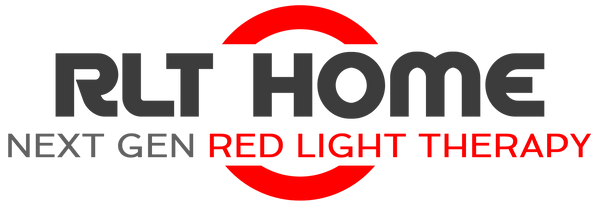480nm Blue Light: Antibacterial Skin & Wound Care
Blue light at ~480nm is used in photobiomodulation (PBM) for its antibacterial and biofilm-disrupting properties, in addition to local anti-inflammatory effects. Unlike red/NIR, which mainly target mitochondrial enzymes - blue light can also excite endogenous bacterial chromophores (porphyrins and flavins), generating reactive oxygen species that damage microbial cell walls and inhibit growth. Clinically, this translates to adjunct benefits in managing oral biofilm diseases, high-risk wounds, and some skin conditions when paired with standard care.
Table of Contents
Research Summary (Human-focused, 480nm): From our curated dataset of 29 studies:
- Very successful: 21 (72%)
- Somewhat successful: 2 (7%)
- No effect: 6 (21%)
Overall, blue light shows strong adjunct utility particularly where microbial burden or biofilm control is a key driver of outcomes (e.g., peri-implant mucositis, chronic ulcers). Results are protocol-dependent and improve when used alongside standard care (debridement, dressings, hygiene) [2][4][5].
How 480nm Works (Antibacterial Mechanisms)
Blue light interacts with bacterial endogenous porphyrins/flavins to produce reactive oxygen species that damage cell membranes and DNA, reducing colony counts and biofilm viability. Clinically, this mechanism supports:
- Biofilm control in oral/peri-implant sites when added to mechanical debridement [2].
- Wound-bed management in chronic ulcers as an adjunct to dressings and off-loading [4][6].
Clinical Uses Backed by Human Studies
Oral/Implant Health: Peri-implant Mucositis
Adding in-office PBM (including blue) to standard mechanical debridement improved clinical parameters versus debridement alone, consistent with better biofilm control at the peri-implant sulcus [2].
Wound Care: Chronic & High-Risk Ulcers
Adjunct polarized/blue-inclusive light protocols reported improved healing trajectories in chronic wounds (diabetic, pressure, venous) when layered on guideline care, suggesting a role for microbial burden reduction and local modulation of inflammation [3][4][5][6].
Infectious Presentations: Case-Level Evidence
Case experience in wound infection (e.g., Aeromonas) describes improved clinical course when polarized/blue-inclusive light is added to standard antimicrobial management, signaling potential synergy rather than replacement of antibiotics [1].
Dermatology & Post-Burn Care (Adjunct)
Orange/blue-adjacent polarized light has shown symptom relief (e.g., pruritus) and support in post-burn recovery; where infections or colonization complicate healing, blue’s antibacterial mechanism may help as part of a broader plan [7].
Using Blue with Red/NIR
Blue excels at surface-level microbial control. Red (630–660nm) and NIR (810–850/1064nm) penetrate deeper to support mitochondrial function in tissue repair. Many protocols combine blue for decontamination with red/NIR for healing, especially in oral sites and chronic wounds [2][3][4]. This concept is explored further in our article comparing different colors in light therapy.
Choosing an LED Device for 480nm
For antibacterial aims, prioritize:
- Verified 480nm wavelength with adequate irradiance at practical working distances (surface targets).
- Uniform coverage of the treatment field (oral/peri-implant zones, wound periphery).
- Multi-wavelength pairing (blue + red/NIR) for decontamination plus repair support.
- Session control (repeatable timing/cadence) to match clinical schedules.
The RLT Home Total Spectrum panels provide 480nm alongside red/NIR channels, enabling combined antibacterial and pro-healing sessions in one device.
Safety & Practical Dosing Notes
Blue light is generally well tolerated when applied to intact skin and managed oral/wound sites. Avoid direct retinal exposure; use eye protection when treating near the face. In wounds, follow standard care (debridement, moisture balance, pressure/off-loading) and treat blue light as an adjunct, not a replacement for indicated antibiotics or procedures. For detailed protocols on session times and frequency, please consult the official Total Spectrum Usage Guide. Dose conservatively and monitor response; discontinue if irritation occurs. Protocols typically use short, repeated exposures across the week to maintain bioburden control.
References
- Aeromonas wound infection: adjunct polarized/blue-inclusive light during care
- Peri-implant mucositis: mechanical debridement ± in-office PBM (clinical)
- Polarized light in chronic wound management (human)
- Diabetic foot ulcer: polarized light adjunct outcomes
- Pressure ulcer: polarized light as part of prevention/treatment pathway
- Venous leg ulcers: polychromatic polarized light in clinical practice
- Post-burn pruritus: orange/blue-adjacent polarized light (symptom relief)
- Salivary gland PBM: oral milieu support (human)
- Polychromatic non-coherent light in clinical recovery (human)







